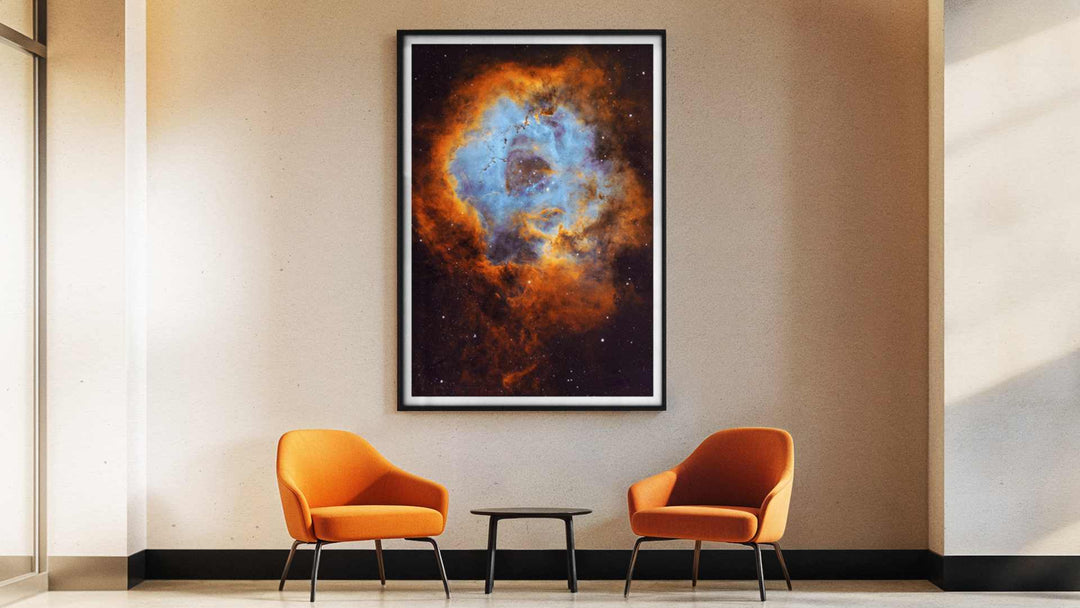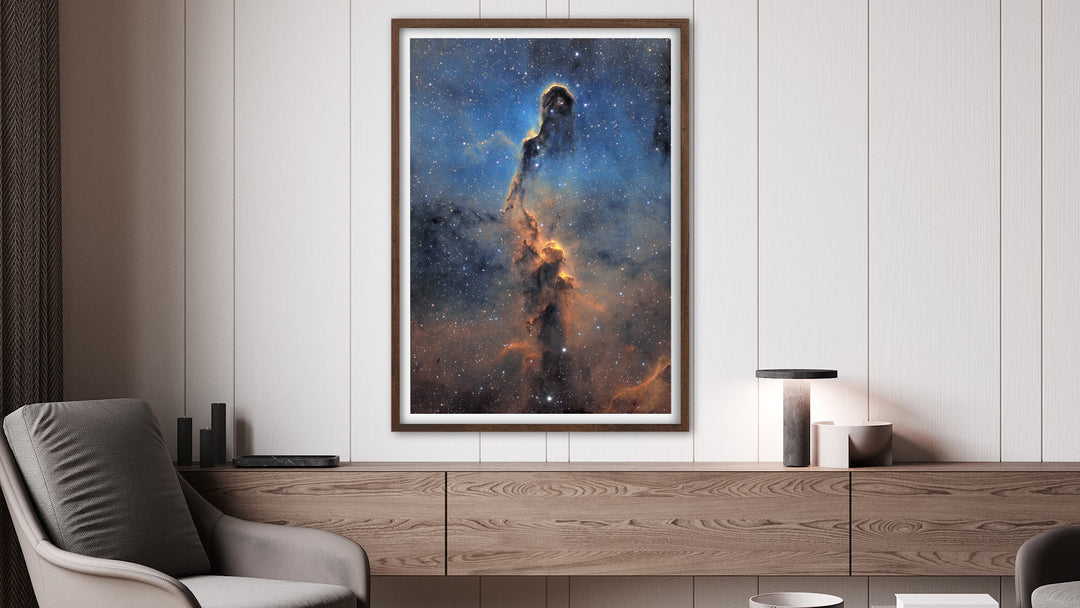Milky Way Core with Anteater and Rho Ophiuchi by Łukasz Remkowicz - The Heart of Everything
26,000 light-years from Earth, hidden behind curtains of gas and dust so thick that visible light cannot penetrate, sits Sagittarius A*—a supermassive black hole containing 4.3 million solar masses. Around it, 10 million stars crowd within a single parsec, dominated by red giants and Wolf-Rayet stars from violent star formation a million years ago.
This is the Galactic Center. The axis around which 200 billion stars—including our Sun—orbit once every 230 million years.
Polish astrophotographer Łukasz Remkowicz aimed his camera at this cosmic heart from Hakos, Namibia, capturing not just the galactic core but the entire infrastructure surrounding it: the Rho Ophiuchi complex ablaze with multicolored nebulae, Antares the red supergiant illuminating its surroundings, Zeta Ophiuchi carving a massive hydrogen bubble through space, and the delicate blue reflection nebulae of the Anteater region.
One single focal length.
One wide-field frame.
The entire story of stellar evolution written in dust and light.
A Masterclass in Cosmic Architecture
The Galactic Center dominates the left side—that dense concentration of stars, that bright glow marking where our galaxy's gravitational anchor resides. You're seeing the galactic bulge, a roughly spheroidal concentration of mostly old stars surrounding Sagittarius A*. Dark dust lanes thread through it, extinction so complete that background stars simply disappear.
Rho Ophiuchi explodes with color on the right—one of the closest and most studied star-forming regions at just 460 light-years. That vibrant mix of blue reflection nebulae (IC 4603, IC 4604, IC 4605) where starlight scatters off cosmic dust. Red emission regions where hydrogen glows at 656.3nm, ionized by newborn O and B stars. Dark molecular clouds where temperatures hover at 13-22 Kelvin and new suns condense from primordial gas.
Antares—Alpha Scorpii, the "rival of Ares"—shines distinctly red near Rho Ophiuchi. This is a red supergiant so enormous that if placed at our Sun's position, it would extend past the asteroid belt. At 550 light-years distant, it masses 13-16 Suns but shines 76,000 times brighter. It's illuminating the Rho Ophiuchi cloud complex in its foreground, a cosmic spotlight on stellar nurseries.
Zeta Ophiuchi (center-left) tells a different story. This is a runaway O-type star—the nearest O-class star to our Solar System at roughly 440 light-years—ejected from a binary system long ago and now plowing through interstellar space at 24 km/s (54,000 mph). Its bow shock creates Sh2-27, a faint but enormous hydrogen bubble spanning 10° of sky (100 light-years across at its estimated distance). This massive HII region is nearly invisible to human eyes despite covering an area 20 times the Moon's diameter.
The Anteater Nebula (NGC 6726/6727/6729 complex) nestles within the broader frame. These are reflection nebulae at only 420-500 light-years—about one-third the distance to the Orion Nebula, making them among the closest star-forming regions to Earth. NGC 6729 is a variable nebula powered by irregular variable star R Coronae Australis, changing brightness and shape as the embedded protostar's activity fluctuates. Herbig-Haro objects—shock fronts from embryonic stellar jets—trace where stars are actively forming right now.
And threading through everything? Dark dust. The dense molecular clouds that give structure to the Milky Way, that shape what we see and hide what we cannot.
The Technical Achievement
This wasn't a mosaic. This was a single 28mm focal length capturing the full breadth of the galactic center region in one cohesive frame.
The composition? Natural arrangement that tells a story—galactic center left, Rho Ophiuchi right, Zeta Ophiuchi and the Anteater bridging between. Key targets together. Abundant dust revealing galactic structure. A single frame encompassing stellar birth, stellar maturity, stellar death, and the supermassive black hole that governs it all.

Image Details:
- Location: Hakos, Namibia
- Mount: Sky-Watcher Star Adventurer
- Lens: Sigma Art 28 mm
- Camera: Canon EOS R (modified)
- Filter: Astronomik H-alpha clip-in
- Exposure: RGB 104 × 90 s, H-alpha 6 × 5 min
- Processing: PixInsight & Photoshop
The Astrography Standard: Curated for the Connoisseur
You don't just want a space photo; you want an authentic, award-quality piece of art that tells a story. That's the Astrography promise. We meticulously curate our collection, selecting only the most compelling images that carry both profound scientific significance and exceptional artistic merit.
This photograph is a technical and aesthetic marvel, representing an entire field of view rich with key astronomical targets in one spectacular arrangement. When you choose Astrography, you're investing in the universe's most beautiful stories, prepared for you with gallery-grade precision.
Who Needs This Window to the Stars?
-
Art Collectors: Acquire a vibrant, complex composition that bridges science and abstract expressionism, a verified piece of award-caliber art.
-
Space & Science Lovers: Own a detailed visual reference of the Galactic Center's most famous regions—a constant source of wonder.
-
Interior Designers: Create a breathtaking, conversation-starting focal point with deep color and dynamic structure that adds gravity to any space.
-
Gift Seekers: Give a truly unforgettable, museum-quality gift that celebrates the majesty of the cosmos.
Museum-Quality for the Ages
-
Fine Art Print (200+ year lifespan): Gallery-grade archival paper with museum-tested pigments engineered to outlast institutions. The same materials used when permanence matters—when prints must survive centuries without fading, without yellowing, without degradation. This is heirloom quality. Legacy quality. The galactic center preserved for your descendants.
-
Poster Print: Accessible pricing without sacrificing color fidelity, tonal accuracy, or detail preservation. Perfect for students, emerging collectors, educators, anyone wanting the Milky Way's heart on their wall without fine-art pricing.
Both formats receive obsessive preparation—color grading to preserve the delicate balance between stellar whites, nebular reds, and dust browns; contrast optimization to maintain core detail while rendering surrounding structures; print profiling matched to Remkowicz's processing vision balancing RGB and H-alpha data.
Your Wall. Our Galaxy. One Frame.
Most people know the Milky Way as that faint band crossing dark country skies.
They don't know they're seeing it edge-on.
They don't know that bright glow toward Sagittarius marks the galactic center.
They don't understand that every star visible to naked eyes—all 4,500 of them—resides in our local neighborhood, mere hundreds of light-years away, while 26,000 light-years toward the core, a black hole containing 4.3 million Suns governs the orbit of 200 billion stars.
They don't see Rho Ophiuchi's stellar nurseries birthing new suns.
They don't notice Antares the supergiant rival of Mars.
They miss Zeta Ophiuchi's bow shock bubble spanning 100 light-years. They overlook the Anteater's blue reflection nebulae and Herbig-Haro jets.
This print shows them. All of it. In one frame.
The Milky Way's heart beats 26,000 light-years away.
Bring it home.
Secure this spectacular print for your collection today.


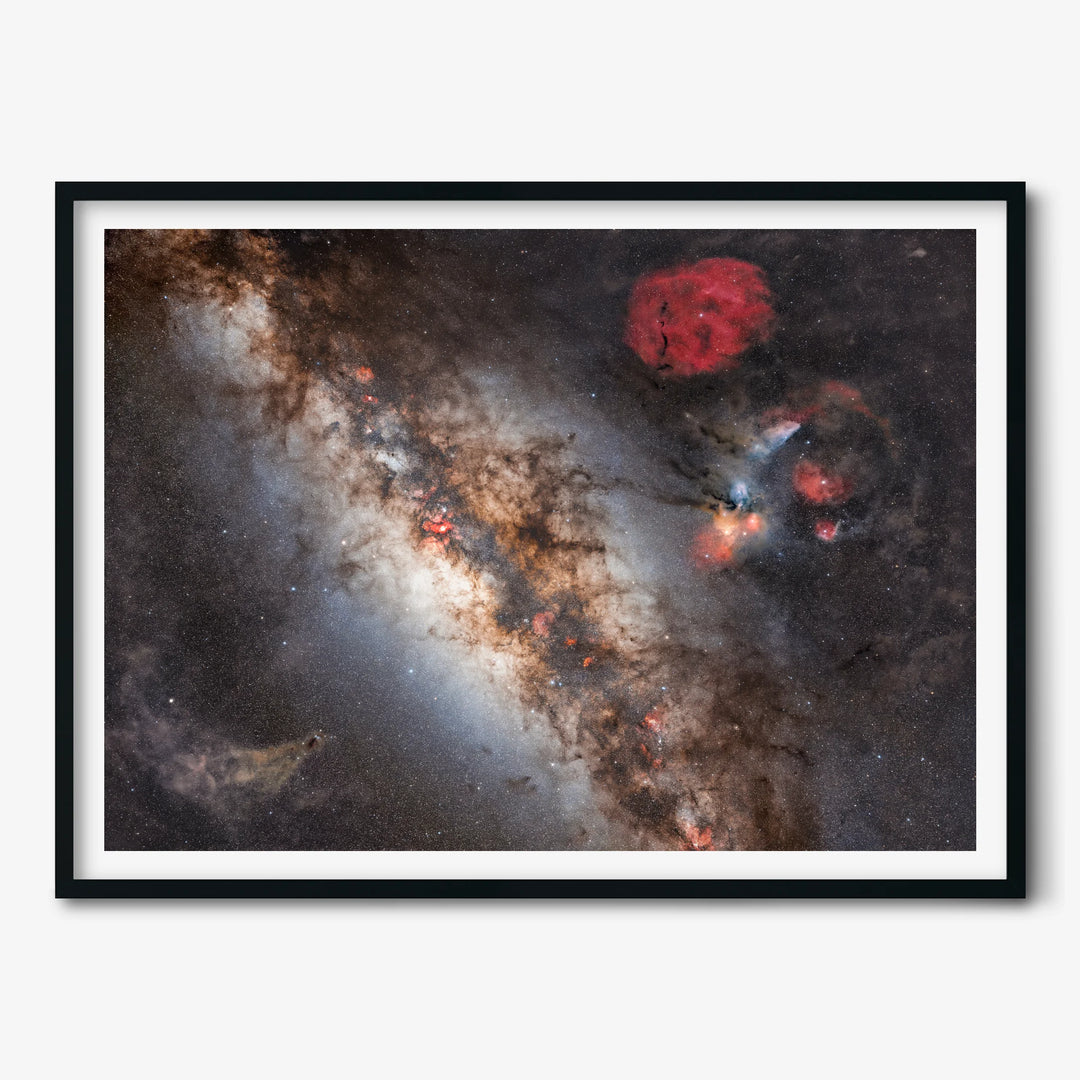
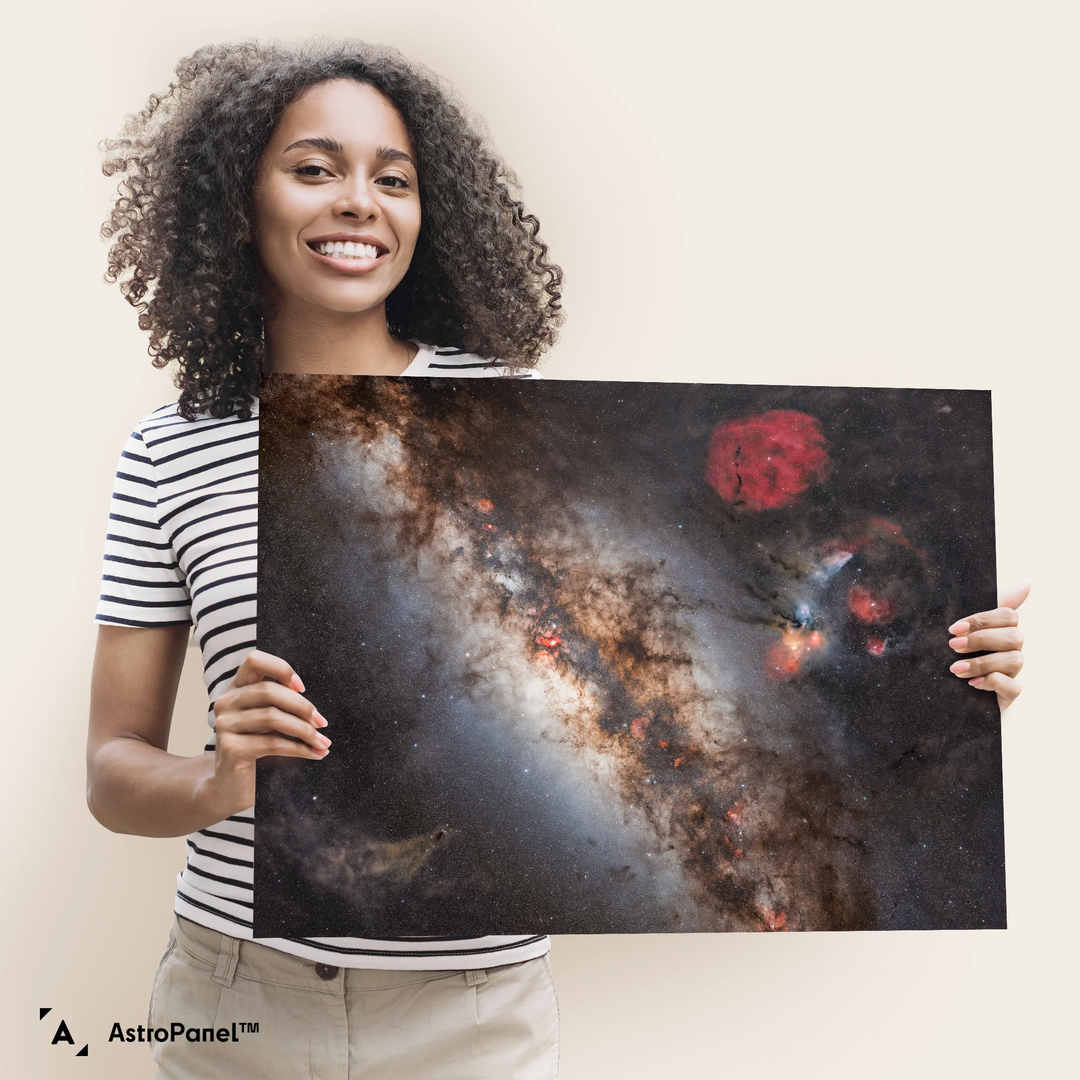
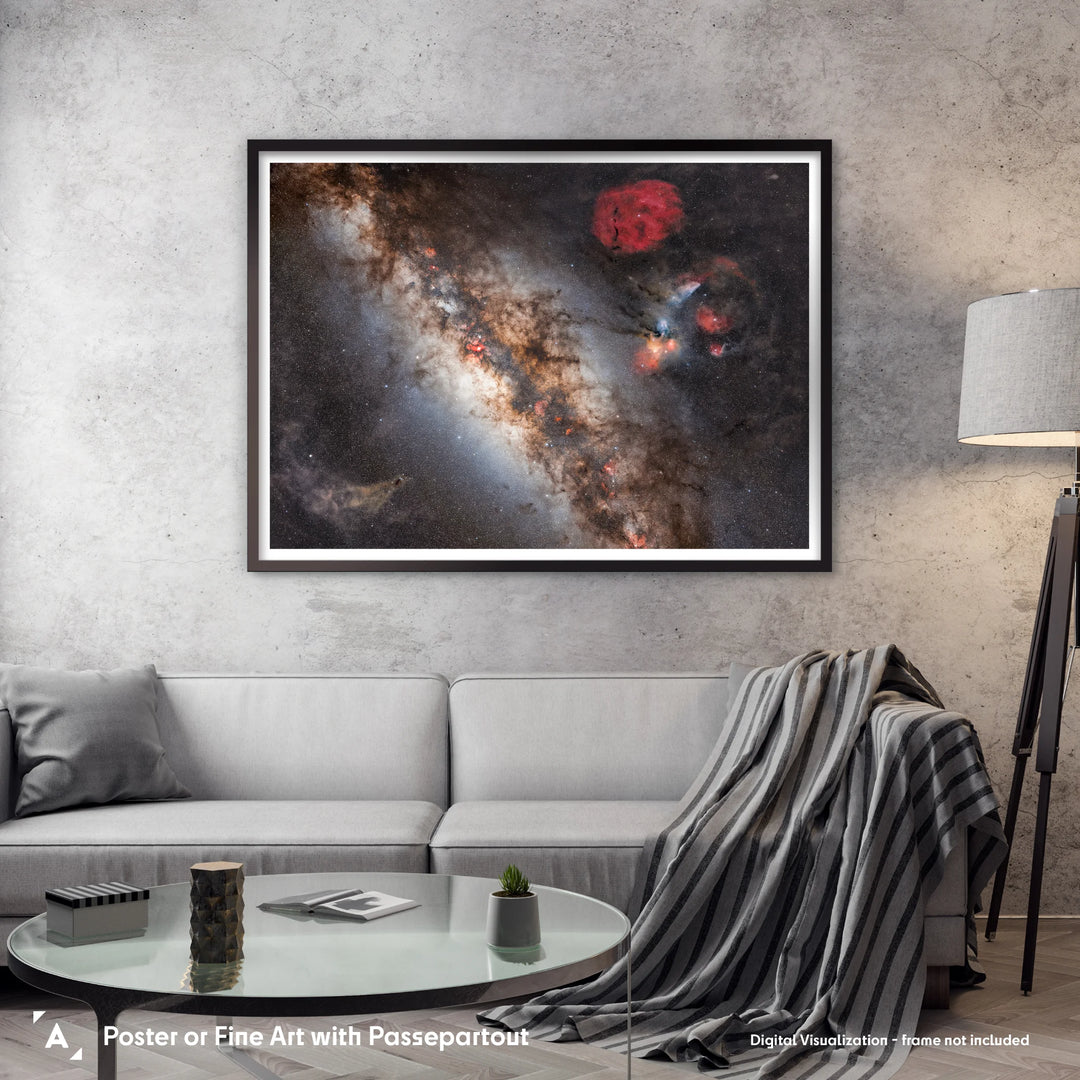
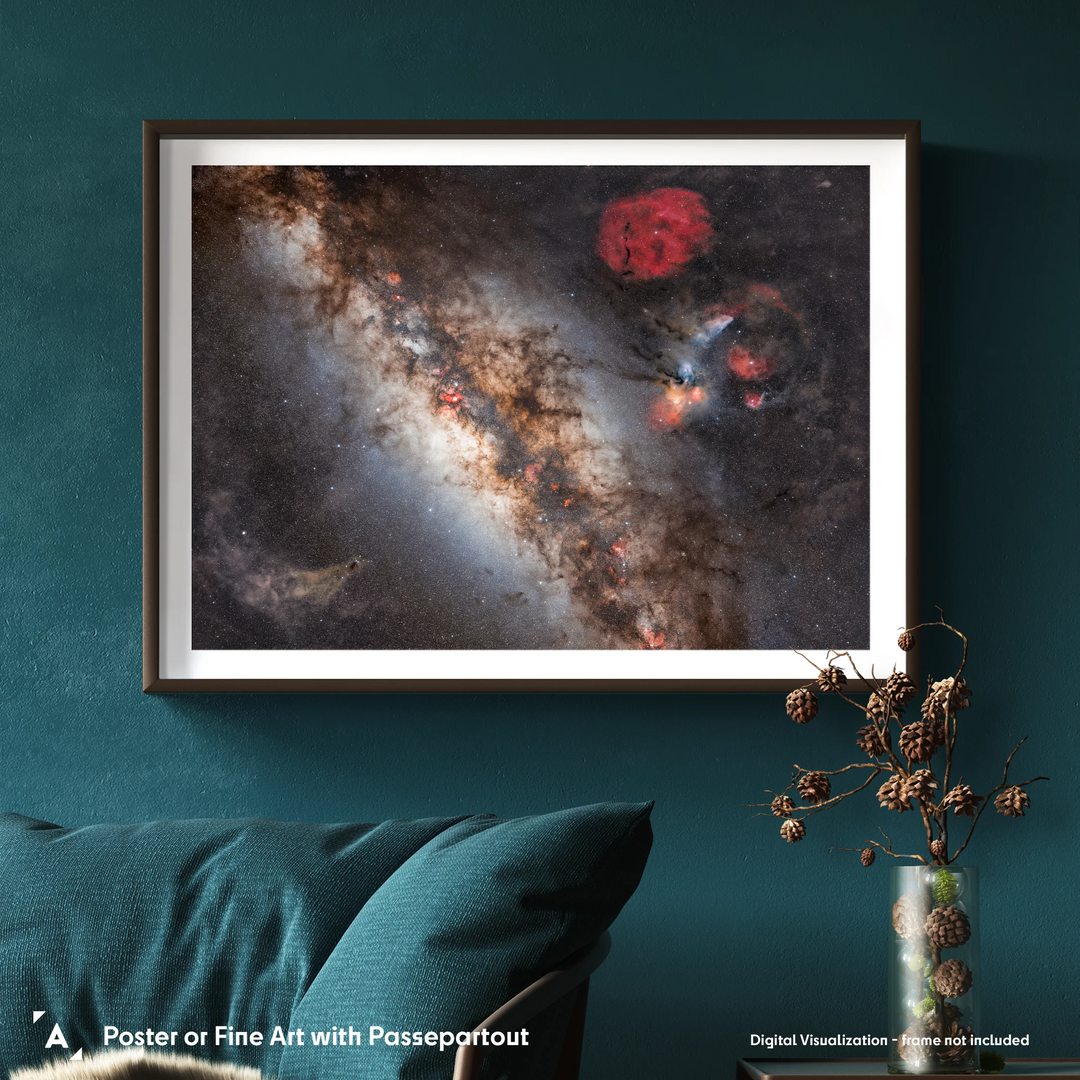
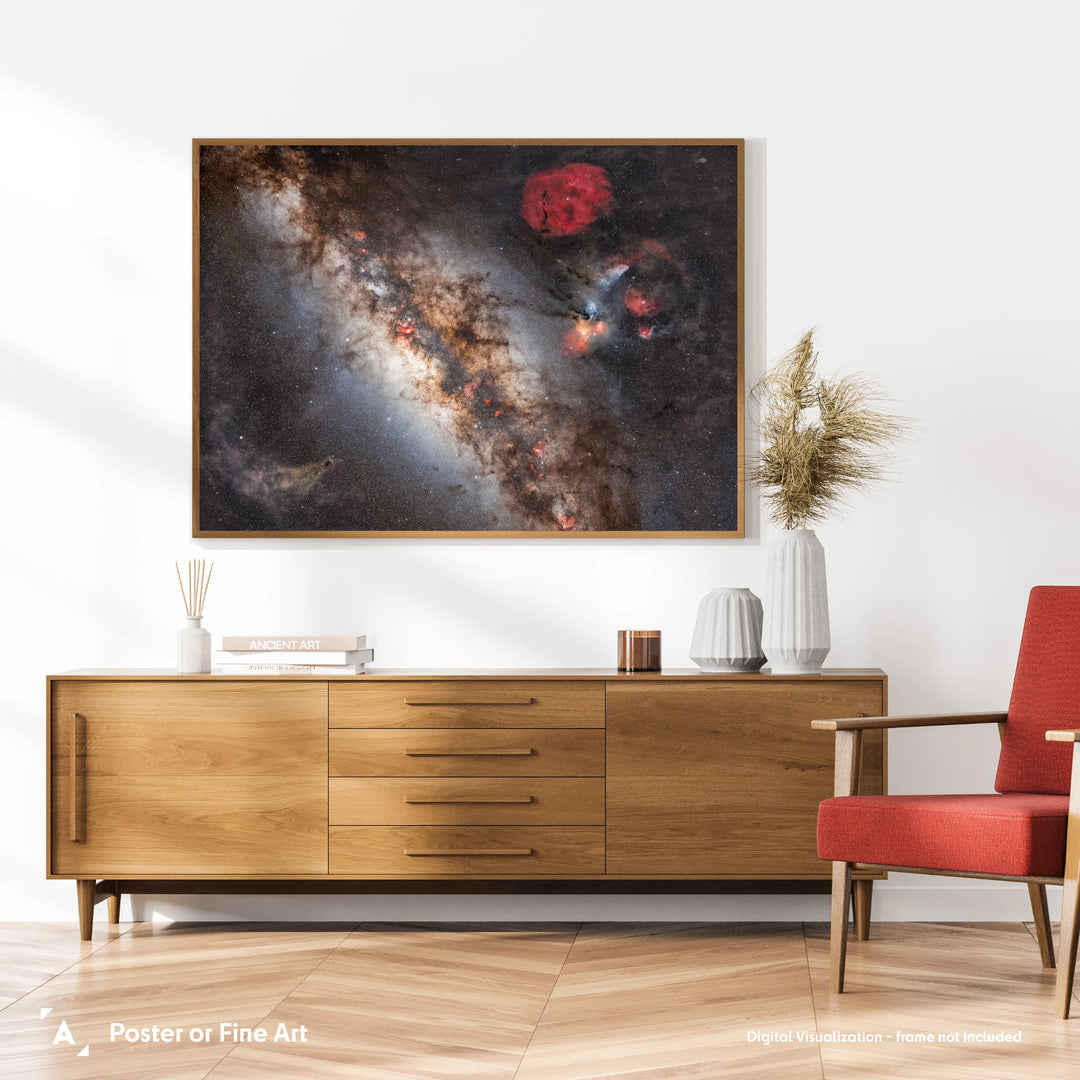
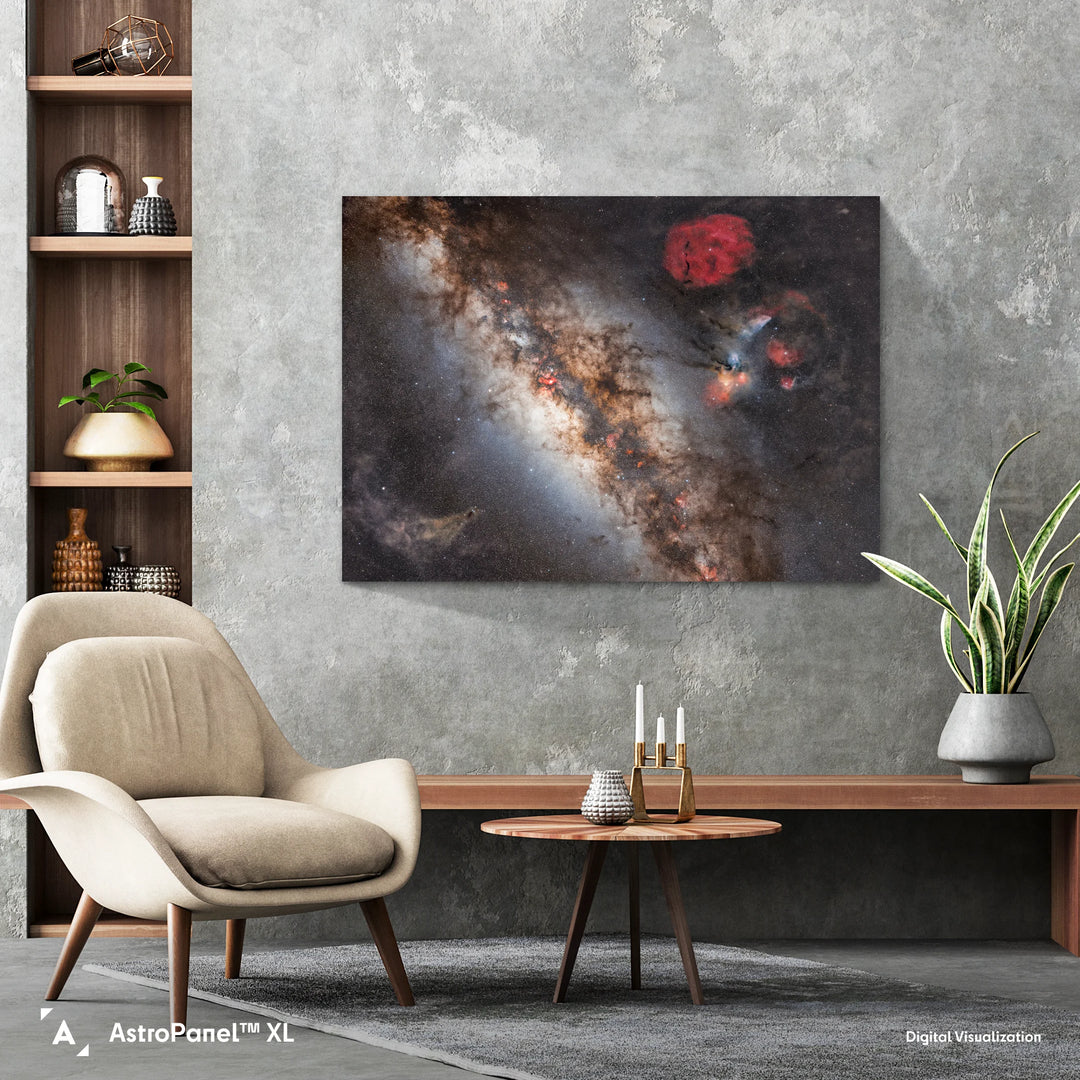
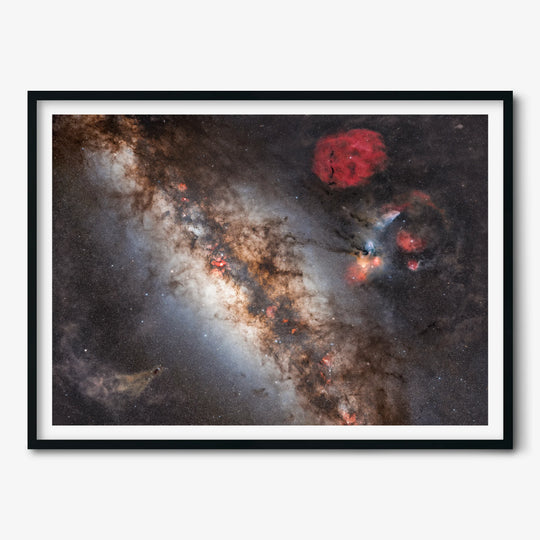
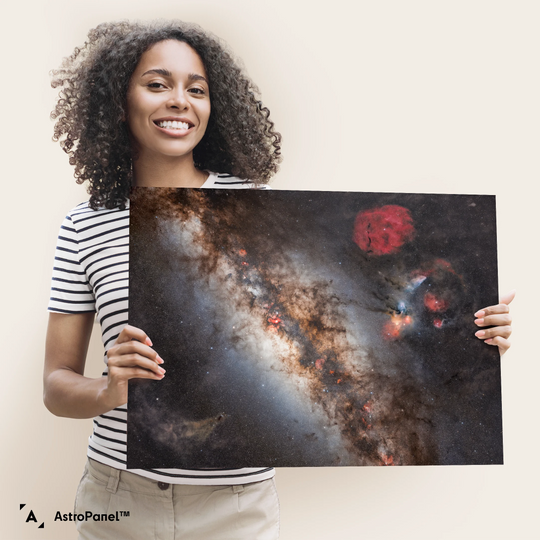
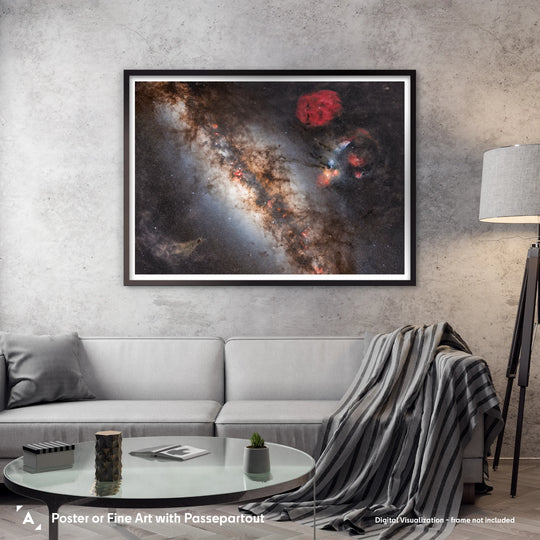
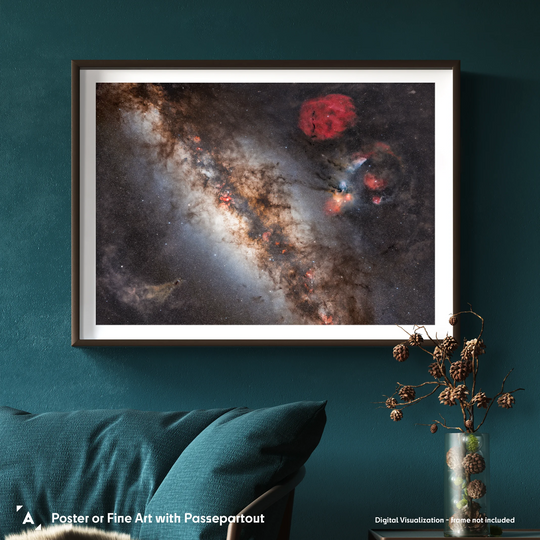
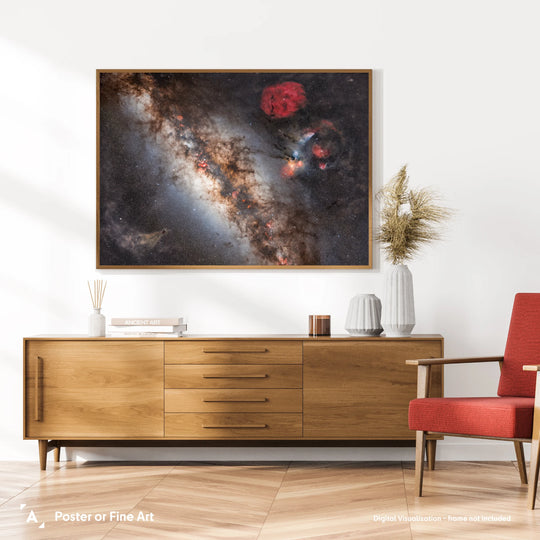
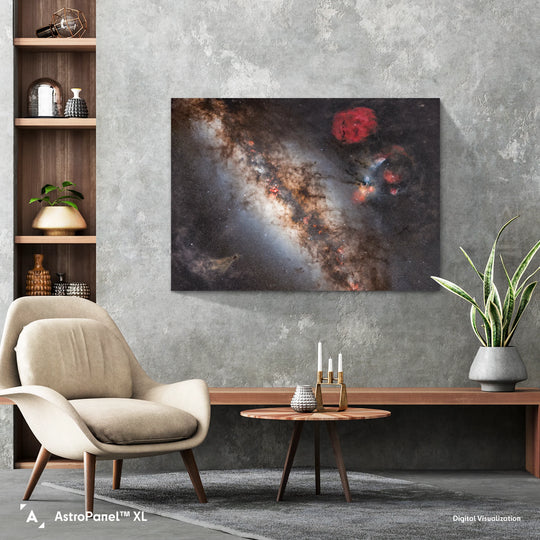


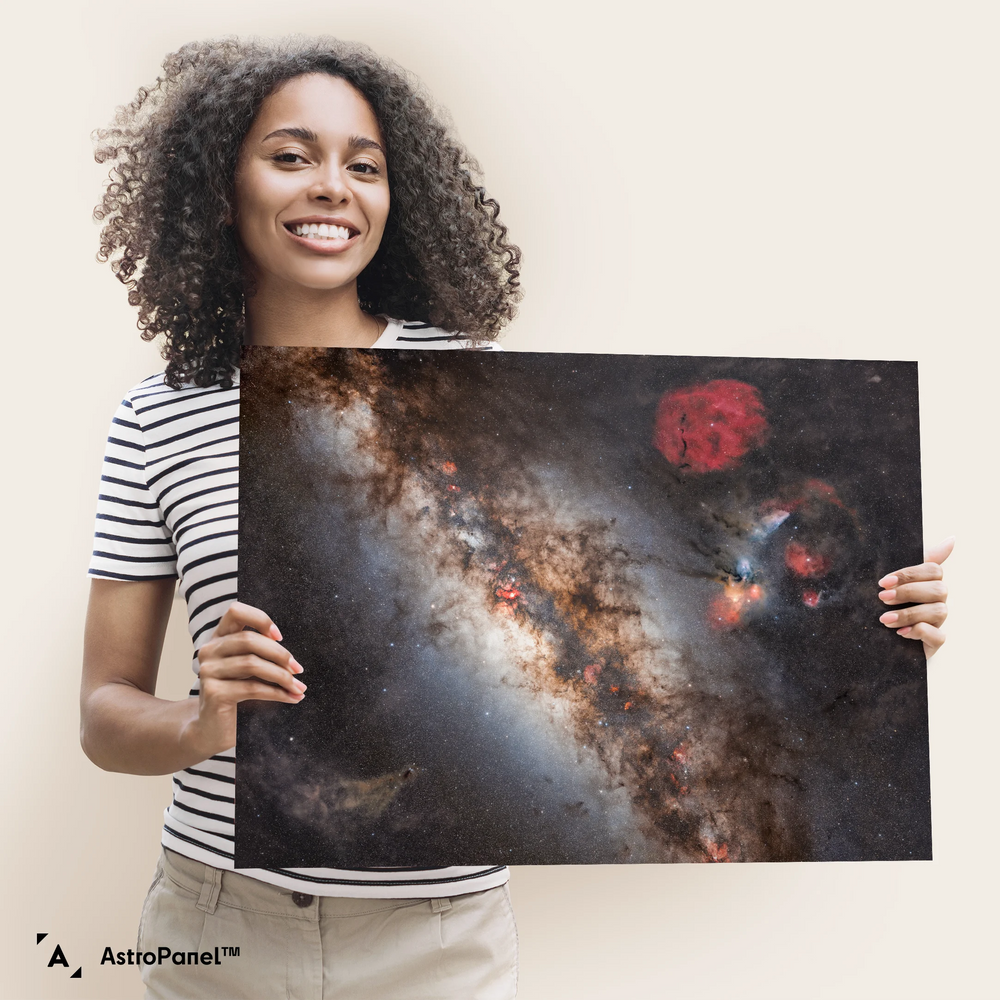

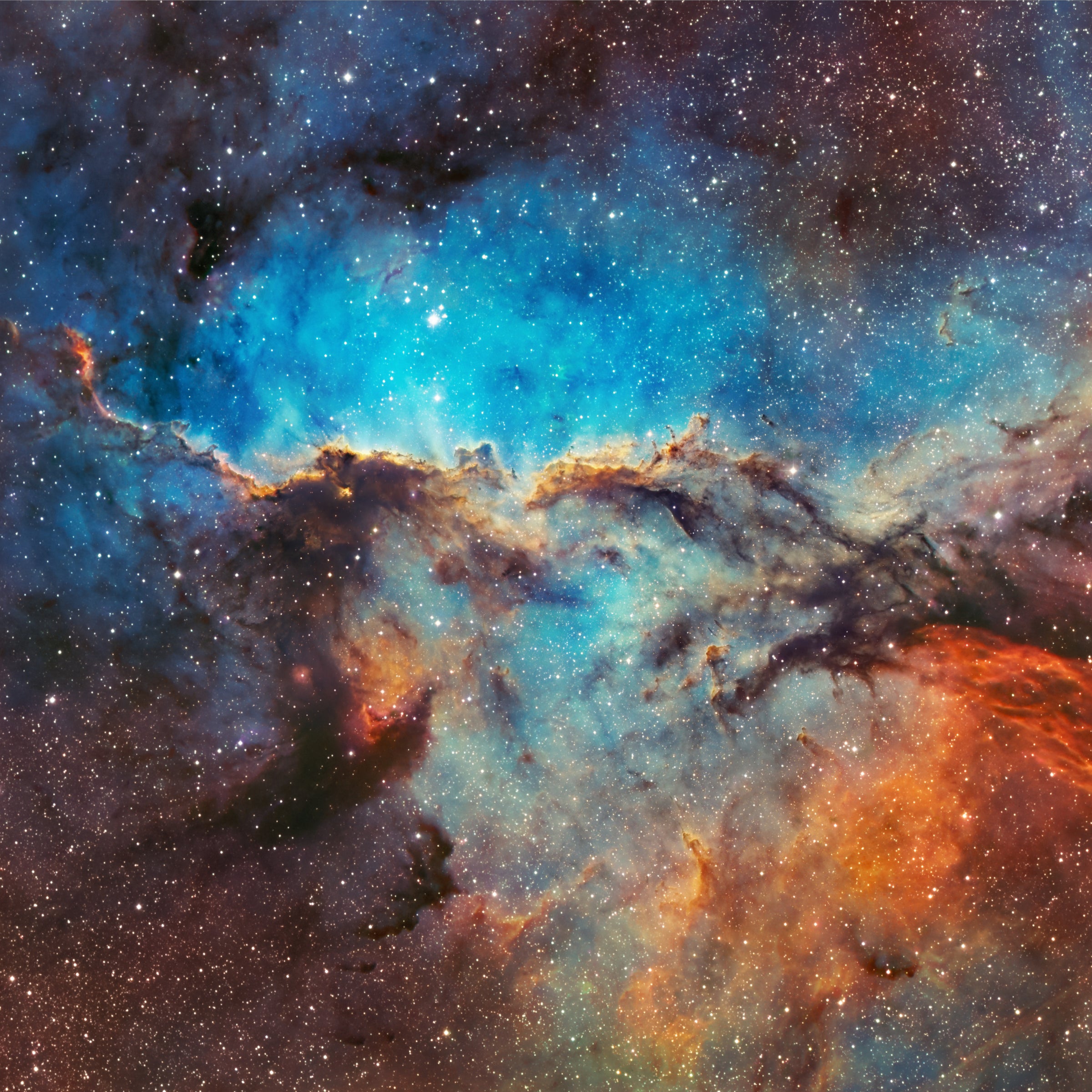
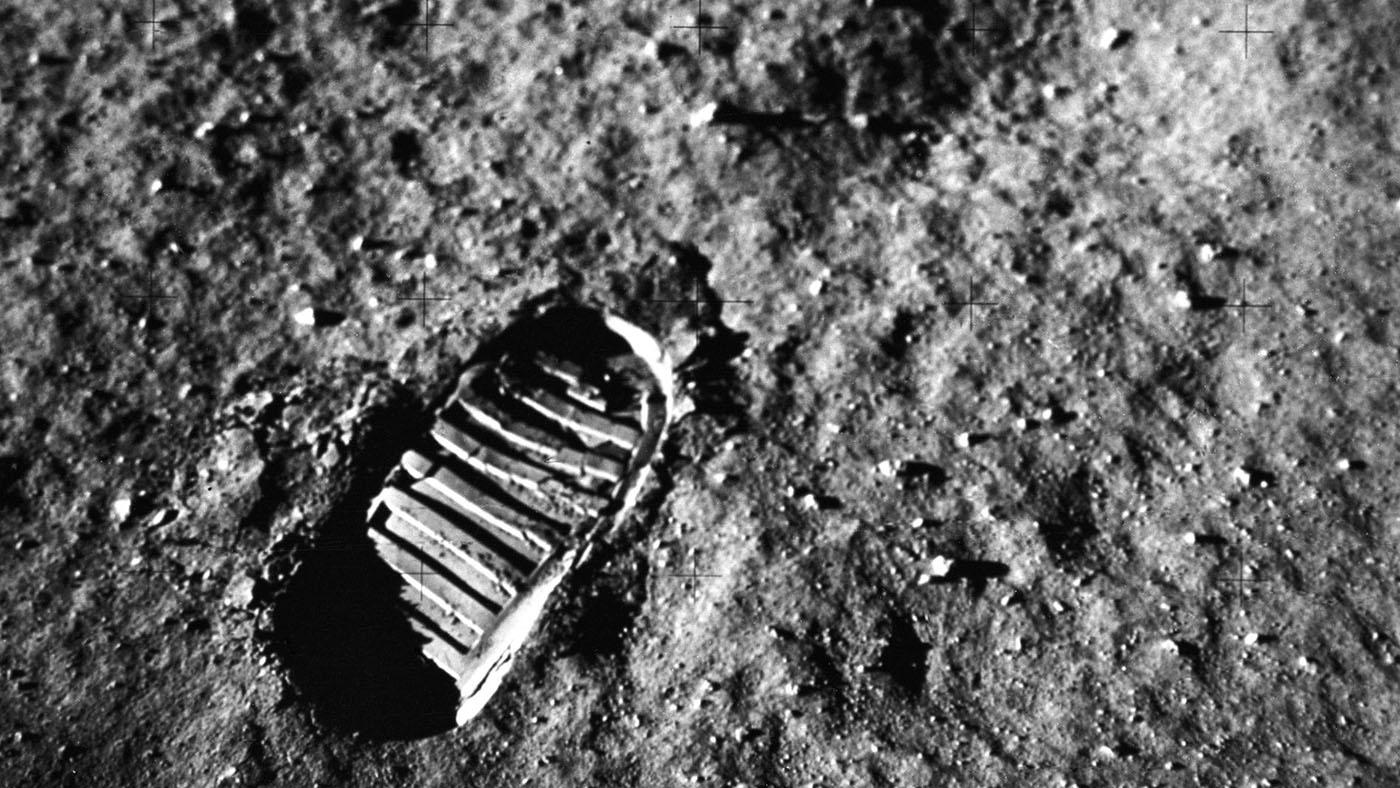
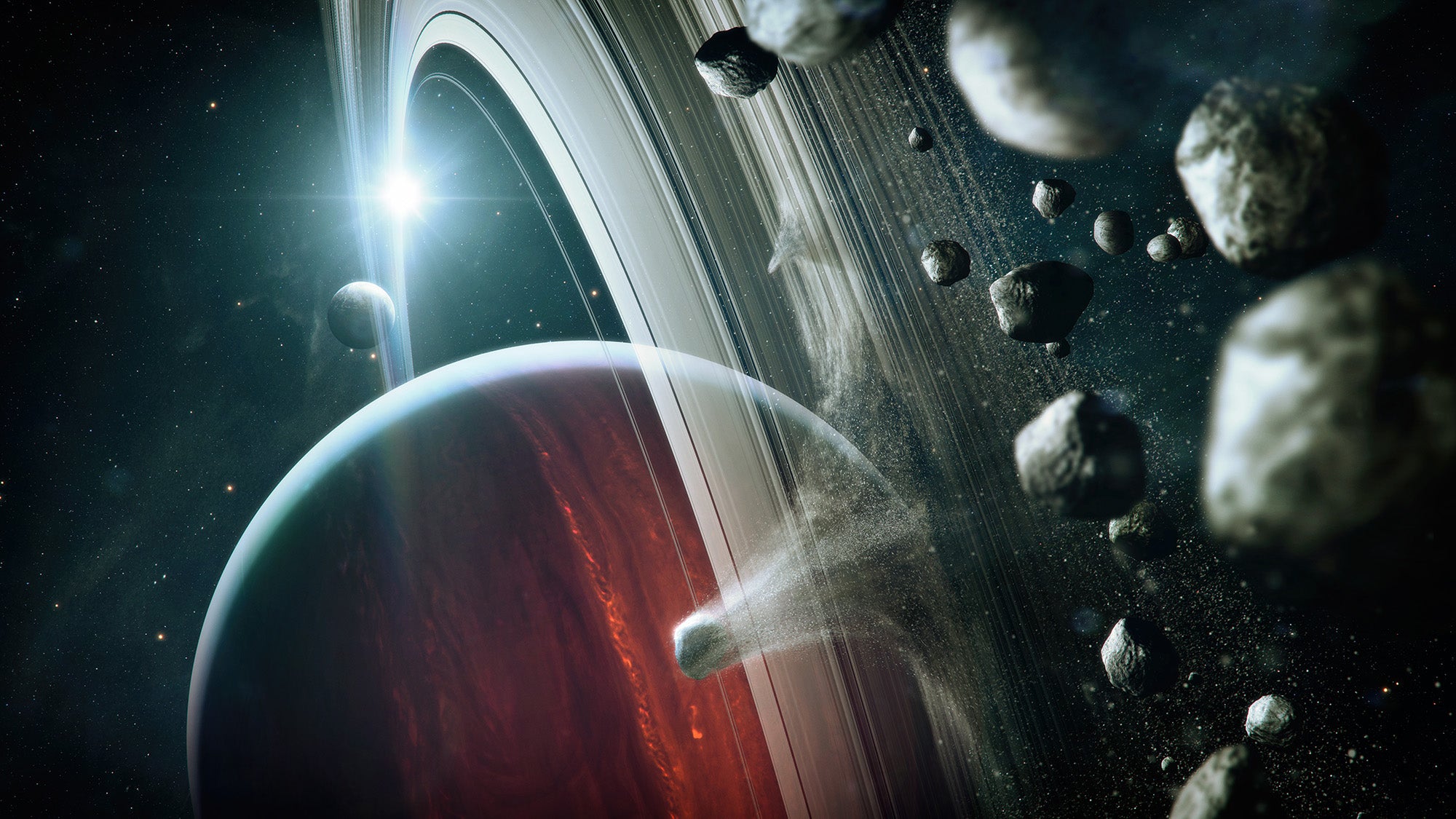
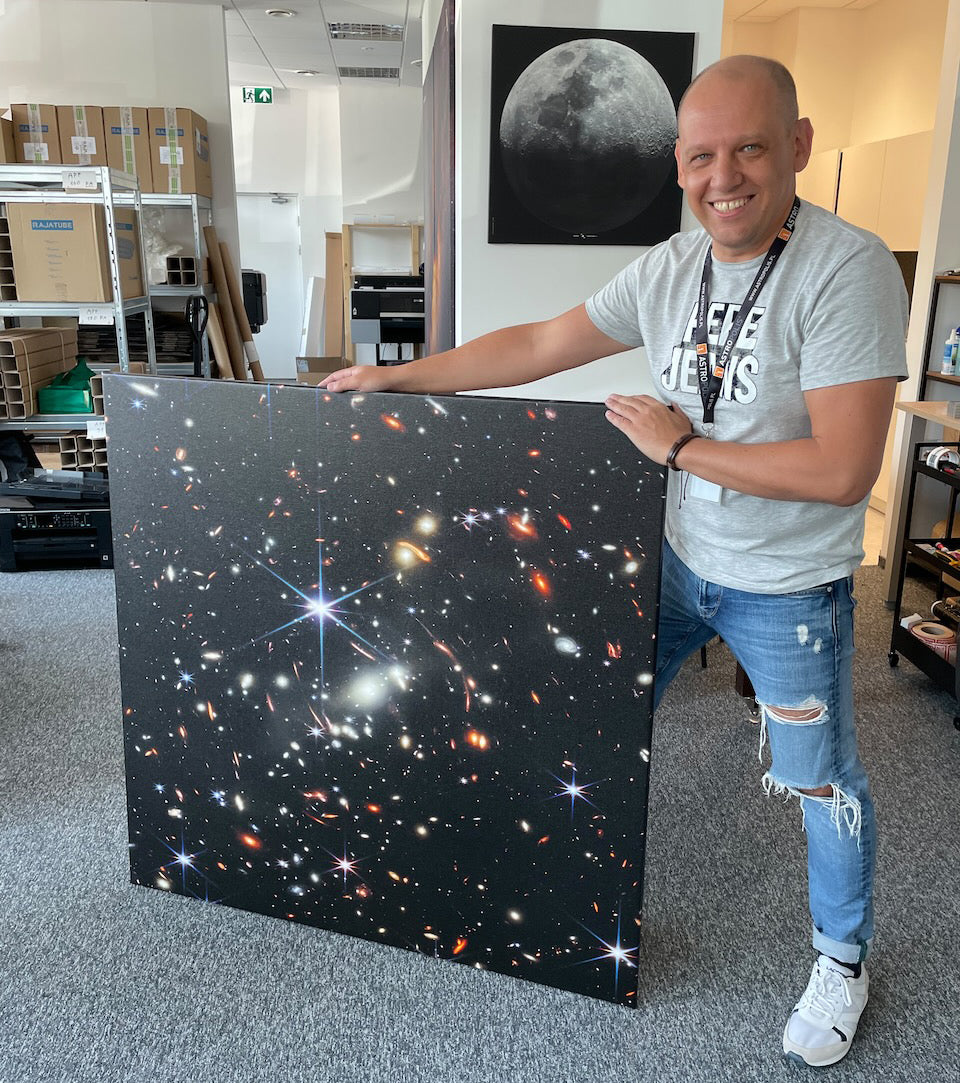
![4 Incredible Space Posters and Wall Art for Man’s Cave [Inspirations]](http://astrography.com/cdn/shop/articles/mans-cave-2-16x9-1_83814d94-574a-4782-a3a0-cf4e59620b81.webp?v=1763116144&width=1080)
